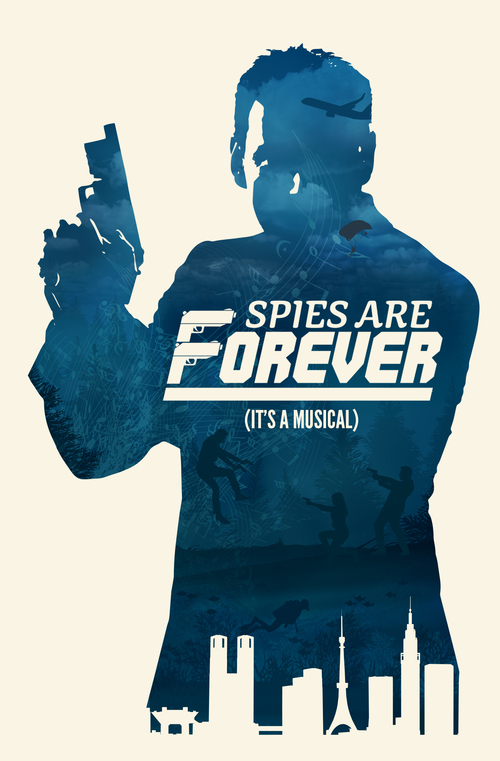The Second Worst Thing to Happen on 9/11
Hey... recognize this art style?
When Hamilton: An American Musical exploded into mainstream popularity after its 2015 debut, it did more than just bring hip-hop to Broadway or make theatre kids start rapping about the Federalist Papers it transformed the way an entire generation interacted with American history. Lin-Manuel Miranda didn’t just write a musical about Alexander Hamilton; he created a cultural phenomenon that rebranded dusty white men in powdered wigs as vibrant, passionate, racially diverse revolutionaries with dreams, flaws, and rhythm.
And it worked. For better or worse, Hamilton created emotional connections between audiences and historical figures who were previously just names in textbooks. Suddenly, Alexander Hamilton wasn't just the guy on the $10 bill, he was the misunderstood immigrant genius with bars. Thomas Jefferson wasn’t just a slave-owning president, he became a strutting, jazzy showman in a purple velvet suit. And John Laurens? He wasn’t just a footnote in revolutionary history, he was a tragic queer-coded martyr with a tragic queer-coded fanbase.
That last part is important. Hamilton didn’t just fictionalize historical people—it humanized them, often to the point of mythologizing. It blurred the lines between biography and fanfiction, and in doing so, opened the floodgates for fandom culture to reinterpret, reimagine, and yes, sometimes memeify, America’s founding fathers. Hence: Thomas Jefferson in a Miku binder.
These reinterpretations aren’t inherently bad or dangerous, in fact there’s something genuinely exciting about reclaiming history and making it accessible. But it’s also important to remember that stylizing a slaveowner with anime sparkles doesn’t erase the fact that he was, well, a slaveowner. And that’s where the cultural impact of Hamilton becomes more complicated.
Because Hamilton doesn’t just revise history; it romanticizes it. It paints Hamilton as a scrappy underdog hero and frames the Founding Fathers as progressive visionaries, when in reality many of them actively upheld systems of inequality. The musical makes a few nods to slavery and inequality, but it mostly sidesteps the harsher truths in favor of narrative flow. And that’s okay, it’s theatre, not a documentary but we, as the audience, need to recognize the difference.
I'll give you an example, Aaron Burr is heavily sanitized by the narrative. He's a tragic figure, a hero in his own right. He was soo sad when he killed Hamilton don't you just wanna give him a hug? But this pitiful man who spent too long waiting for his chance is hardly the reality. Burr was a slaveowner, who upheld racist values. If you've ever dedicated Dear Theodosia to someone you love feel free to close your eyes right now, because Burr treated his wife TERRIBLY. Not only was he frequently unfaithful but it is pretty historically accepted that he wasn't a great husband. While he lets out a gut-wrenching scream when he shoots Hamilton in the musical, according to most historical sources he wasn't very shaken at all after murdering his friend. Funnily enough, despite repeating how he became the villain of the story, Lin Manuel Miranda actually turned Burr from a villain into a hero in his own right by representing him as sympathetic.
The result of not making that distinction is a generation of teenagers who think Eliza Hamilton invented feminism and that Alexander Hamilton was a cinnamon roll who did nothing wrong. This is where memes and fanart come full circle: when we start treating these historical figures like fictional characters, we risk losing sight of the real people they were, and the real harm they caused.
I’m not here to shame anyone for liking Hamilton (I memorized the entire thing in 7th grade and have no regrets). I’m also not saying fan art is evil, go ahead, draw Aaron Burr in a Sailor Moon outfit if that’s your thing. But it’s important to be aware of how media, especially something as powerful and emotionally charged as Hamilton can shape the way we view history. History is messy. People are flawed. And while musicals can highlight the drama and humanity of the past, they shouldn’t replace the truth. So enjoy the show, sing along to “Guns and Ships,” and yes, even laugh at the cursed fanart but don’t forget to log off Tumblr every once in a while and read a history book.
PS: The article is titled so because the original artwork was uploaded on the anniversary of 9/11. So now, I hope the phrase 'Never Forget' has taken on a new, far more cursed meaning for you.




Comments
Post a Comment